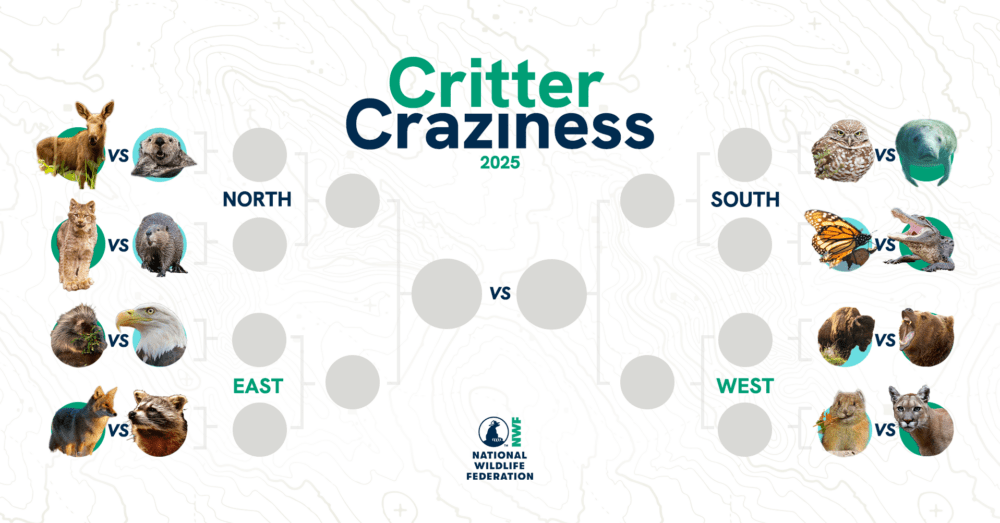We have much more to do and your continued support is needed now more than ever.
Weekly News Roundup- August 23, 2013
What’s happening at National Wildlife Federation this week?

- Lobsters are feeling the heat and it’s not coming from being inside a pot. Read the blog about how climate change is affecting lobsters in Maine.
- Dragonfly or DragonSPY? Read this blog on the cool 007 qualities of the dragonfly.
- Keystone XL will threaten the future survival of America’s wildlife. Read about the environmental impacts of the proposed Keystone XL pipeline and what you can do to help to stop it.
NWF Taking Action
Sportsmen Recommend Improvements to Federal ‘Fracking’ Rule
August 22- A national sportsmen’s coalition has submitted detailed recommendations to the Department of the Interior for strengthening a federal rule regulating hydraulic fracturing on public lands, including measures that would improve transparency and the management of all fluids in a drilling process that has the potential to affect broad expanses of valuable fish and wildlife habitat and public access to recreation in these areas.
The rule establishes safety standards for hydraulic fracturing, or “fracking,” on federally owned lands and would update regulations, including activities affecting water quality and quantity, that are at least 30 years old. The BLM has said that public comments, due Friday, will be considered as it finalizes revisions to the regulations.
The Sportsmen for Responsible Energy Development coalition has commended the Bureau of Land Management for moving forward with the regulation – and for its commitment to engaging members of the public during development of the rule – but the sportsmen stressed that significant room for improvement remains.
WHAT IS FRACKING? Learn more about how hydraulic fracturing contaminates habitat, waterways, and even the drinking water with toxic chemicals.
RESTORE Council Releases Initial Gulf Coast Restoration Plan
August 21– On Wednesday, the Gulf Coast Ecosystem Restoration Council released its Initial Comprehensive Plan: Restoring the Gulf Coast’s Ecosystem and Economy. Leading national and local conservation and restoration organizations — Environmental Defense Fund, National Audubon Society, National Wildlife Federation, Coalition to Restore Coastal Louisiana and the Lake Pontchartrain Basin Foundation — released the following statement:
“We thank the Gulf Coast Ecosystem Restoration Council for its efforts toward a comprehensive plan to restore the invaluable Gulf ecosystem. As the Council takes its next crucial step of prioritizing ecosystem restoration projects, we urge them to embrace the Louisiana Coastal Master Plan as its guiding document for restoring the Mississippi River Delta, which was ground zero for the 2010 Gulf oil disaster.
Take Action! Write to the Department of Justice and let them know you care about Gulf wildlife.
And now here are highlights from NWF in the news:
Politico: Deadline for comments on fracking rule – Climate activists wary of House hearing – Gore draws fire
The federal government must step in, because it’s not clear if anyone else will, writes the Sportsmen for Responsible Energy Development, a coalition of groups including Trout Unlimited and the National Wildlife Federation.
The Hill: USGS moves to create climate change vulnerability database
She said groups, such as the National Wildlife Federation, offered advice on the effort, and that USGS hopes to have a version of the registry completed by early next year.
Mongabay.com: 85% of Brazilian leather goes to markets sensitive to environmental concerns
The research, conducted by Nathalie Walker and Sabrina Patel of the National Wildlife Federation and Kemel Kalif of Amigos da Terra – Amazônia Brasileira, used government data to estimate the proportion of beef and leather production that ends up in environmentally-sensitive markets.
Newark Advocate: Lake Erie: summer algae, unfrozen winters
Climate change has increased the number and intensity of severe storms across the country. Since 1958, there has been a 31 percent increase in the number of days with heavy rains, according to a report the National Wildlife Federation released in May.
The Outdoor Wire: Restore Council Releases Initial Gulf Coast Restoration Plan
“We thank the Gulf Coast Ecosystem Restoration Council for its efforts toward a comprehensive plan to restore the invaluable Gulf ecosystem, home to one of the world’s greatest fisheries and incomparable waterfowling opportunities.”























